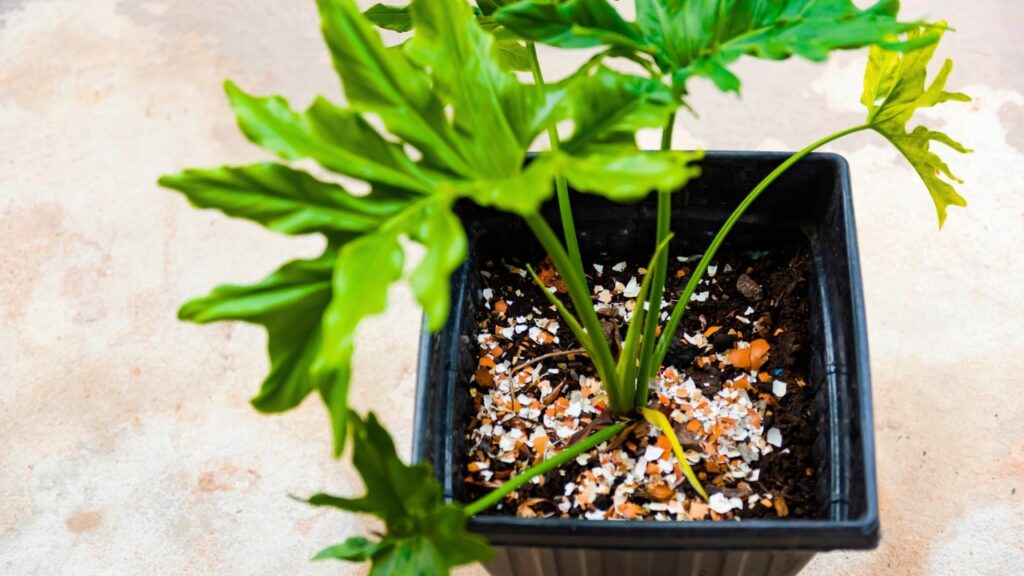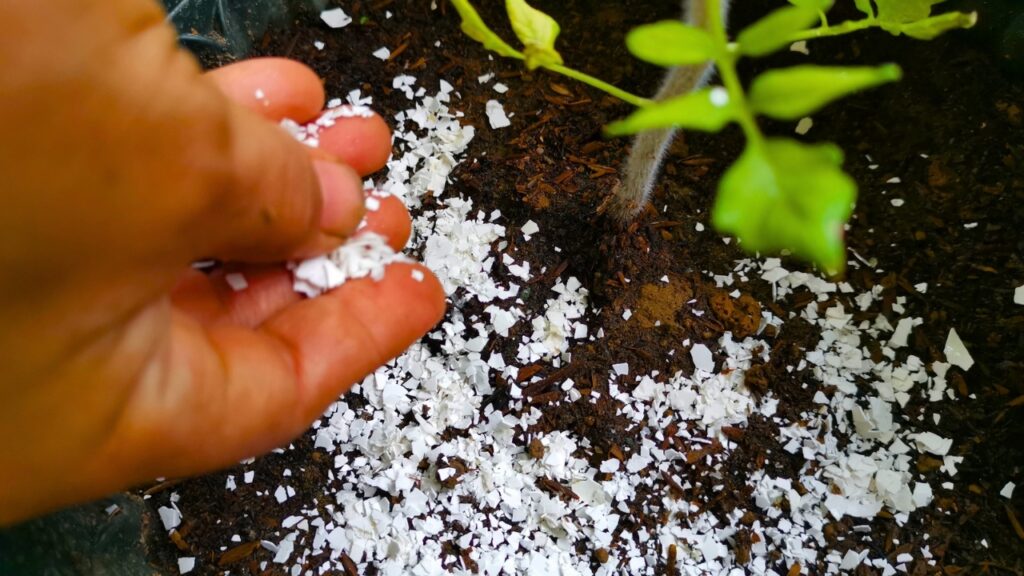Those who consume a lot of eggs wind up with a lot of eggshells. If it describes you, you may want to read this article through to the end. You can either discard the numerous eggshells in your kitchen waste or turn them into valuable material for your kitchen garden.
These eggshells can be used in a variety of ways and are excellent for your garden. They can be DIY seed-beginning kits or fertilizer. Discover the incredible ways eggshells may be used in your garden by reading on.
1. They Are Used As Fertilizers

It can be an issue for crops like tomatoes, peppers, and eggplants if they don’t get enough calcium. The primary problem for plants deficient in calcium is blossom end rot. Eggshells can be used to save these plants that are suffering from end rot. The plants will grow contentedly after absorbing calcium from eggshells. Eggshells can be used for these crops in two ways:
Place crushed eggshells in the holes where your seedlings will be planted. By doing this, you can prevent future end rot in your plants.
Simply smash some eggshells and scatter them around the base of your large plants if they have end rot. Every two weeks, you might need to scatter eggshells around plants. The state of your plants’ health will determine that.
2. DIY Pest Control Disincentive

Cutworms, snails, and slugs are difficult pests to control. During your vacation, they may attack and damage your kitchen garden. You can kill them with a variety of chemicals, but as we all know, those chemicals are bad for the earth and its ecosystem.
Here’s a pest-removal eggshell approach. Crush a few eggshells, but not too much—eggshell powder is not useful in this situation. The sharp edges of small eggshell pieces will deter pests from your kitchen garden.
To keep your favorite plants away, scatter crushed eggshells around them. Their soft bodies can be harmed by sharp edges, but they won’t die.
3. Can Blossom End Rot Be Prevented by Eggshells?

When there is insufficient calcium in a plant’s fruit, blossom end rot occurs. You have less produce to eat when the end of the fruit on the other side of the stem rots. Bloom end rot can be found in:
Peppers and Tomatoes
Squashes of eggplant (similar to zucchini)
When planting these plants in your garden, some gardeners advise adding crushed eggshells to the planting hole. Does that, however, actually work? The pieces of eggshell won’t break down quickly enough to benefit your plants if you don’t grind them into a powder as previously mentioned. However, adding ground eggshells to your garden soil may help prevent blossom end rot if soil tests reveal that your soil does lack calcium.
However, root damage or either too much or too little water may be the problem if soil testing shows that your garden already has enough calcium. If the plant cannot move calcium from the soil to the fruit, blossom end rot may still occur. Pay attention to the plant’s surrounding moisture levels. To retain moisture, mulch the area around the plant and avoid giving it too much or too little water. To protect the roots, do not excavate within one foot of the plant’s stem.
4. An Inexpensive Seed Tray

This utilization of eggshells is not new; it is a common practice on the internet. For indoor seed starting, seed trays are ideal. There are several benefits to starting seeds inside, such as giving you weeks’ notice and allowing you to experiment with different types of your favorite crops.
You can make a great seed tray if you eat a lot of eggs and have eggshells and egg cartons.
Simply fill your eggshells with potting soil or seed starter and plant the seeds inside.
Place them in front of a window that receives a good quantity of sunshine and give them water.
When your seedlings reach a respectable size, move them to their new location. You don’t have to take them out of their shells while transplanting.
You can plant the seedlings with the eggshells in your soil. Eggshells will decompose and add more calcium and other nutrients to the soil over time.
5: Chicken Food

If you have chickens in your garden, you have to offer them a healthy supplement so the hens can produce a good amount of eggs. To do that, grind eggshells into a powder and add it to your chicken’s regular diet.
Since chickens lay eggs and require a healthy supply of calcium for their eggshells, calcium from eggshell powder will be a good addition to your chicken’s supplement.
6. Mulch

The advantages of using organic mulch in the garden are well known. Mulch can prevent weed development, retain water during hot summer days by lowering evaporation, and protect plant roots from frost in the winter.
Eggshells that have been crushed can be used as mulch. Additionally, it will break down to keep slugs and snails away from your plants and contribute calcium to the soil. Plants in pots, particularly houseplants, benefit greatly from eggshell mulch.
How Eggshells Are Prepared for Compost

Eggshells can be manually crushed and thrown in your compost container. There may be eggshell fragments in your completed compost because eggshells take longer to decompose than most other food waste. It’s okay; the eggshell will eventually decompose in your garden. However, there are a few methods to speed up the composting process.
Grinding: Because eggshells contain calcium, they decompose more slowly. It takes a year or longer for large eggshell pieces. However, eggshell fragments will decompose more quickly if they are smaller. Use a coffee grinder to break your eggshells into powder to expedite the process. Purchase a cheap coffee grinder just for your eggshells if you use one to grind coffee.

Drying: Eggshells will be easier to crush if you dry them out first, regardless of whether you plan to use a coffee grinder or simply place them in a plastic baggie and stomp them into pieces. Let them air dry for a couple of days. To dry them faster, spread them out on a cookie sheet and put them in a heated oven.

Boiling: You can create liquid fertilizer if you have a lot of eggshells. Bring 10 to 20 eggshells to a boil, then leave the kettle overnight. The following day, strain out the eggshells. As frequently as every two weeks, water each plant with up to two glasses of the liquid.


